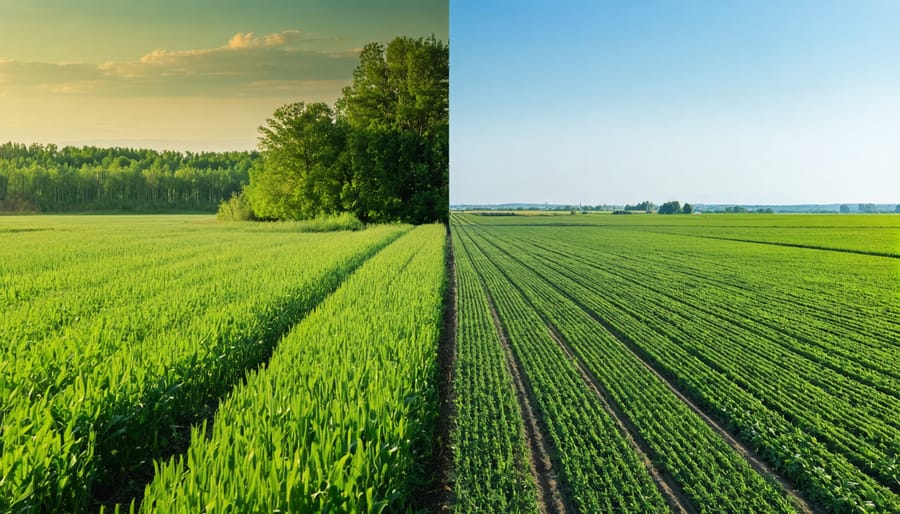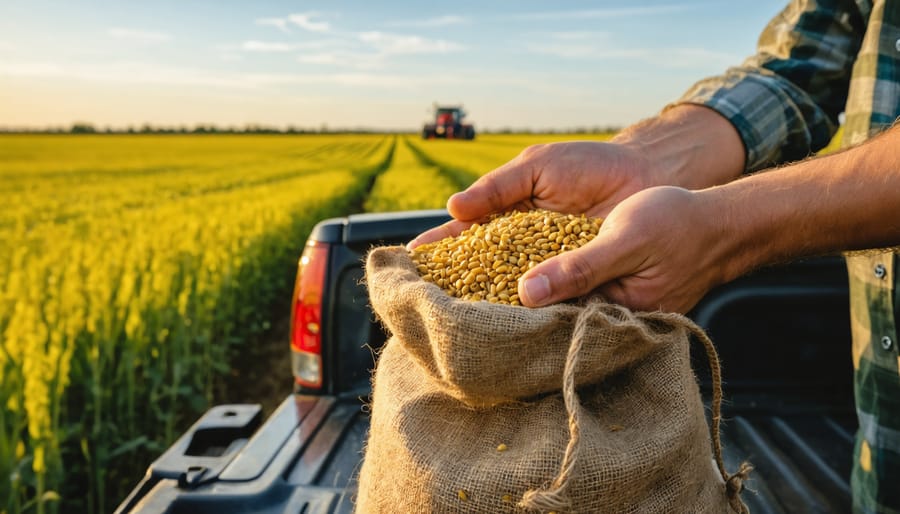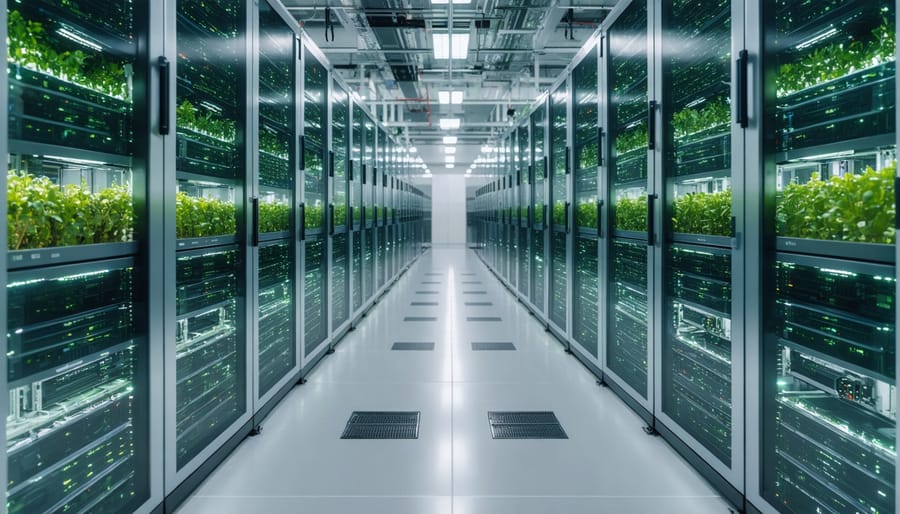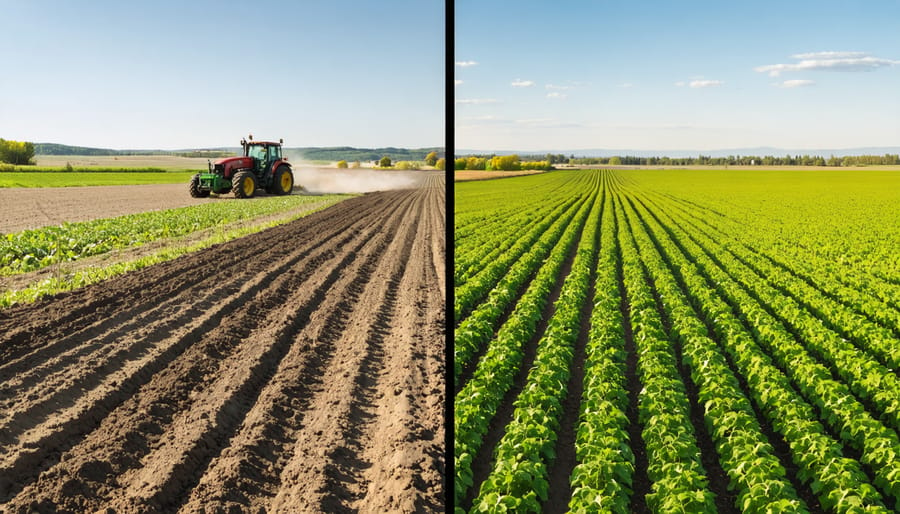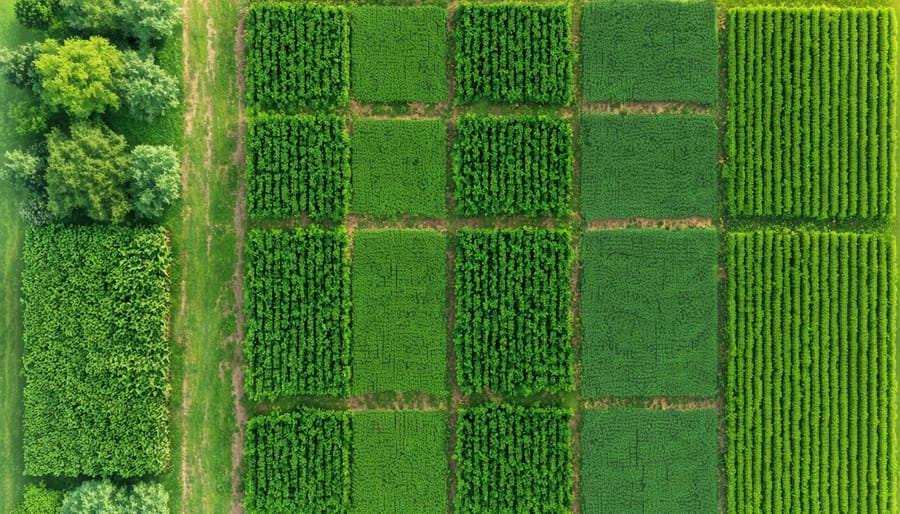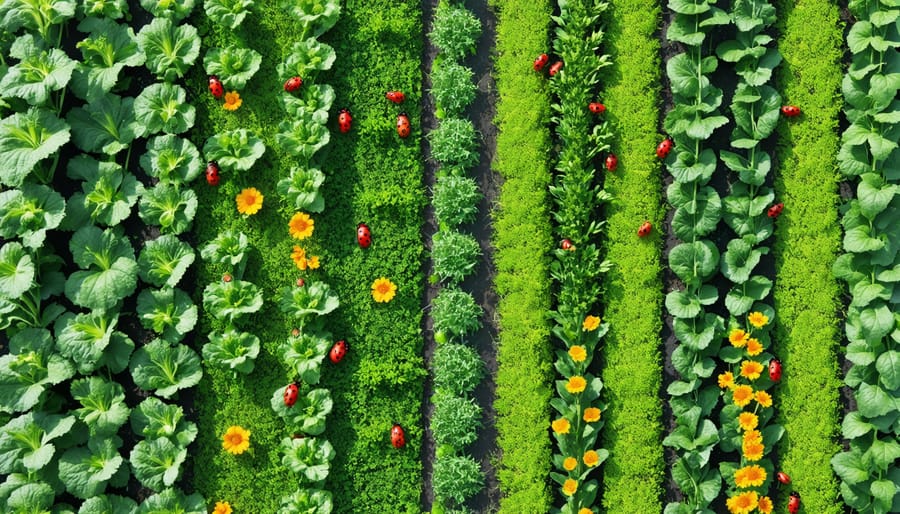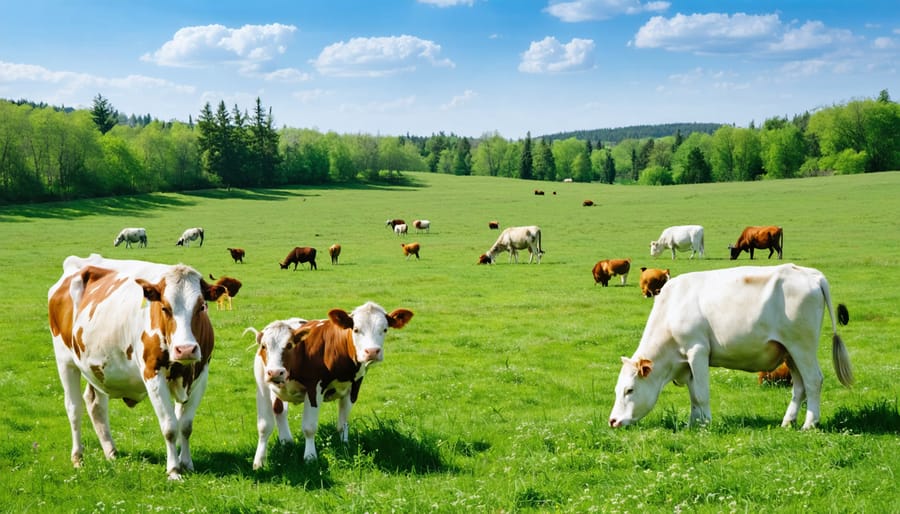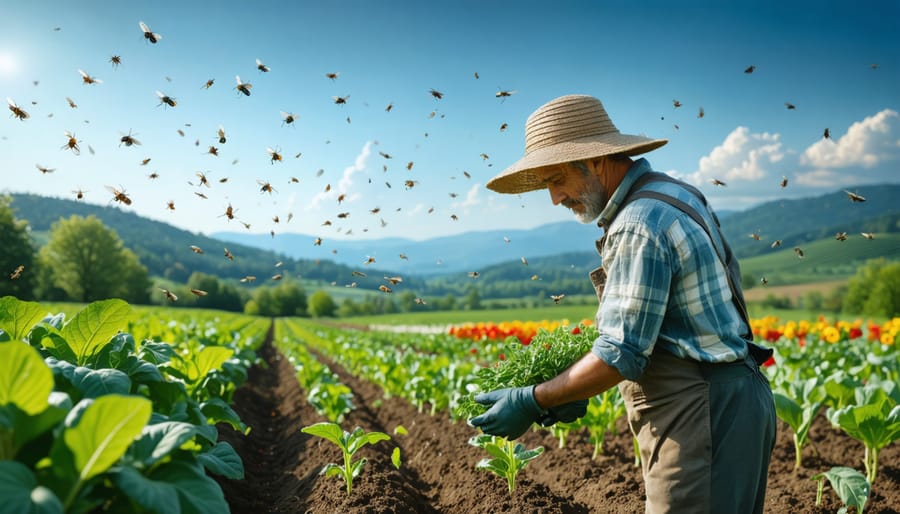As Canadian farmers face critical decisions about their growing practices, the distinction between organic and GMO farming represents more than just a label choice – it’s a fundamental agricultural approach that impacts soil health, crop yields, and farm sustainability. Standing in fields across Alberta’s diverse growing regions, farmers increasingly weigh the benefits of certified organic methods, which prohibit synthetic pesticides and genetically modified organisms, against the potential advantages of GMO crops engineered for specific traits like drought resistance and pest control. While organic farming emphasizes natural ecosystem processes and biodiversity, GMO technology offers precise genetic solutions to agricultural challenges. Both approaches aim to feed our growing population, yet they follow distinctly different paths to achieve this goal. Understanding these differences proves essential for Canadian producers making long-term decisions about their farm’s future, particularly as consumer preferences evolve and environmental considerations take center stage in agricultural planning. This comparison explores how each method shapes our approach to modern farming, impacts local ecosystems, and influences the economic viability of Canadian agricultural operations.
The Core Differences Between Organic and GMO Farming
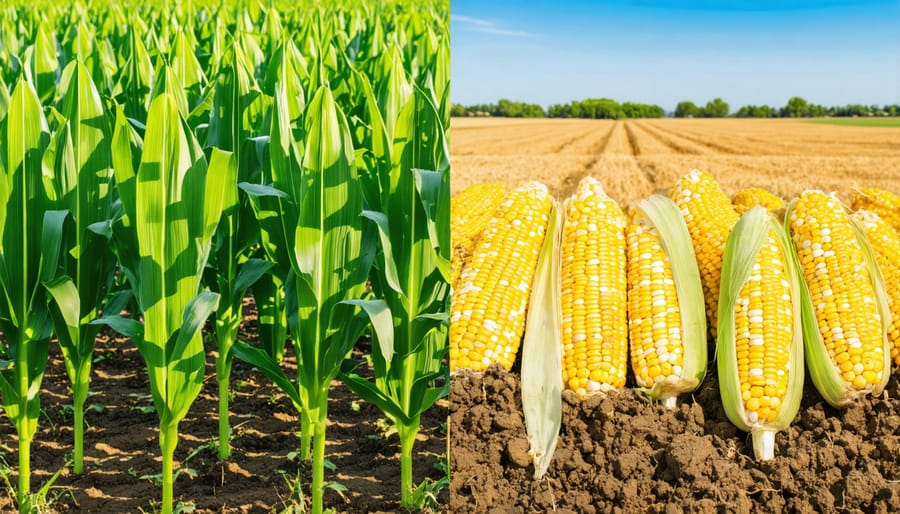
Defining Organic Agriculture in Canada
In Canada, organic agriculture follows strict regulations governed by the Canadian Organic Regime (COR), which sets clear guidelines for farmers and producers. Working alongside various organic organizations in Canada, the Canadian Food Inspection Agency (CFIA) oversees these organic certification standards to maintain consistency and integrity across the sector.
To be certified organic in Canada, farmers must follow a three-year transition period during which they eliminate synthetic pesticides, fertilizers, and other prohibited substances from their operations. During this time, they must implement natural soil-building practices, establish buffer zones to prevent contamination from neighboring conventional farms, and maintain detailed records of their farming practices.
The certification process requires annual inspections and documentation of all farming practices, including seed sources, soil management strategies, and pest control methods. Certified organic farms must use natural methods for maintaining soil fertility, such as crop rotation, cover cropping, and composting. They’re prohibited from using genetically modified organisms (GMOs), synthetic pesticides, artificial growth hormones, and antibiotics in livestock production.
For Alberta farmers considering the transition to organic, local certification bodies provide guidance and support throughout the process, helping producers navigate the requirements while maintaining profitable operations.
Understanding GMO Technology
Genetic modification in agriculture involves precisely altering a plant’s DNA to introduce beneficial traits, such as resistance to pests or improved nutritional content. Here in Canada, our scientists have developed successful GMO crops like herbicide-resistant canola, which has become a cornerstone of Prairie agriculture.
Health Canada and the Canadian Food Inspection Agency (CFIA) maintain strict oversight of GMO crops through a comprehensive safety assessment process. Before any GMO crop can be grown or sold in Canada, it must undergo thorough testing to ensure it’s safe for humans, animals, and the environment. This process typically takes 7-10 years of research and validation.
Currently, the main GMO crops approved in Canada include canola, corn, soybeans, and sugar beets. Each modification serves a specific purpose – for instance, GMO canola varieties developed at the University of Saskatchewan have helped Alberta farmers reduce herbicide use by up to 40% while improving yields.
For Canadian farmers considering GMO crops, it’s important to understand that genetic modification is different from traditional breeding methods. While traditional breeding combines desirable traits through cross-pollination over many generations, genetic modification can introduce specific traits more precisely and efficiently. This technology has helped many Prairie farmers increase their crop resilience and productivity, particularly in challenging growing conditions.
The CFIA maintains a public registry of approved GMO crops, allowing farmers to make informed decisions about incorporating these varieties into their operations.
Environmental Impact Comparison
Soil Health and Carbon Sequestration
Soil health plays a crucial role in both organic and GMO farming systems, though their approaches to carbon sequestration differ significantly. Organic farming typically emphasizes building soil organic matter through natural amendments, crop rotation, and reduced tillage practices. Here in Alberta, organic farmers often report improved soil structure and increased earthworm populations after transitioning from conventional methods.
GMO farming systems can also contribute to soil health and carbon sequestration, particularly through no-till practices made possible by herbicide-resistant crops. Many Prairie farmers have found that GMO canola allows them to minimize soil disturbance while managing weeds effectively, helping retain more carbon in the soil.
Research from the University of Alberta shows that both systems can effectively sequester carbon when managed properly. Organic farms typically store more carbon in the top layer of soil due to regular additions of compost and manure, while GMO no-till systems excel at preventing carbon loss through reduced soil disturbance.
The key difference lies in the approach: organic systems build carbon through biological processes and diverse crop rotations, while GMO systems often focus on preservation through minimal soil disturbance. Local farmer Dave Thompson from Red Deer County shares, “We’ve seen success with both methods on different parts of our operation. The important thing is choosing the system that works best for your specific soil conditions and management style.”
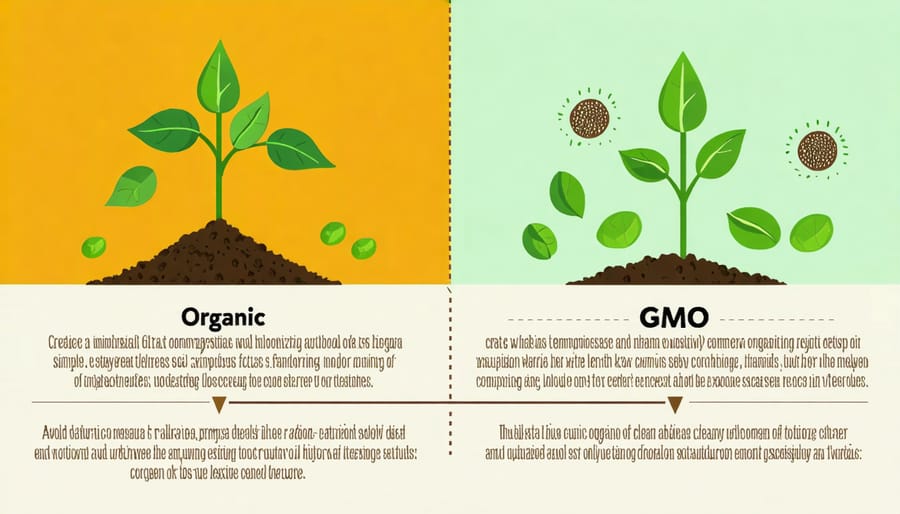
Water Usage and Conservation
Water management practices differ significantly between organic and GMO farming systems, with each approach offering distinct advantages and challenges for Canadian farmers. In organic farming, the focus lies on natural water retention through healthy soil structure and organic matter content. Alberta organic farmer Mike Thompson notes, “Our organic fields typically retain 30% more moisture than conventional fields, thanks to improved soil health.”
GMO crops, particularly drought-resistant varieties, can require less irrigation in challenging conditions. These modified crops have been engineered to maintain yields with reduced water input, which has proven beneficial in Alberta’s semi-arid regions. Recent field trials at the Lethbridge Research Centre showed that drought-resistant GMO canola used 20% less irrigation water while maintaining comparable yields to conventional varieties.
Both systems employ different conservation strategies. Organic farmers often use mulching, cover cropping, and crop rotation to preserve soil moisture and reduce water needs. Meanwhile, GMO farming frequently integrates precision irrigation technologies and drought-resistant traits to optimize water usage.
Conservation methods in both approaches can be equally effective when properly implemented. For example, the Southern Alberta Water Management Project found that organic farms using proper soil management techniques achieved similar water efficiency rates to farms growing GMO crops with advanced irrigation systems. The key difference lies not in overall water usage but in the methods used to achieve water conservation goals.
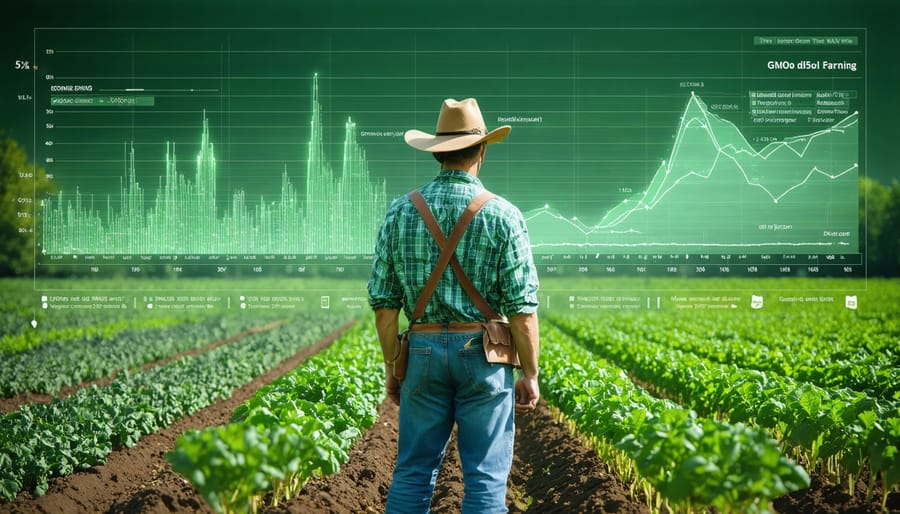
Economic Considerations for Alberta Farmers
Production Costs and Yields
In Alberta’s climate, production costs and yields can vary significantly between organic and GMO farming methods. Organic farming typically requires higher initial investments in soil management and natural pest control methods, with input costs averaging 20-30% more than conventional GMO operations during the first three to five years. However, these costs tend to stabilize once soil health improves and natural systems establish themselves.
GMO crops often show more consistent yields in challenging conditions, with canola farmers reporting 15-20% higher yields compared to organic varieties. However, the higher seed costs and technology fees partially offset these yield advantages. For example, GMO canola seed typically costs $75-100 per hectare more than conventional seed.
Organic farmers in Alberta report smaller but more stable profit margins due to premium pricing, which can range from 20-50% above conventional market prices. While organic wheat yields average 25-30% lower than GMO varieties, the price premium often compensates for the difference. According to local farm data, organic operations spend approximately $200-300 per hectare less on chemical inputs annually.
Weather resilience varies between the two systems. During drought conditions, well-established organic farms often demonstrate better soil moisture retention, while GMO crops can show better resistance to specific environmental stresses they’re engineered to withstand. Success in either system largely depends on management practices and local environmental conditions.
Market Demand and Price Premiums
Canadian consumers are increasingly willing to pay premium prices for organic products, with the organic market growing by an average of 8.7% annually over the past five years. In Alberta alone, organic products typically command a 20-50% higher price point compared to conventional alternatives, creating significant revenue opportunities for farmers considering the transition.
Recent market research shows that organic grain farmers in the Prairie provinces are receiving $18-25 per bushel for organic wheat, compared to $7-9 for conventional wheat. Meanwhile, GMO crops, while typically yielding higher volumes, are sold at standard commodity prices but benefit from reduced input costs and potential pest resistance.
Local farmers’ markets and direct-to-consumer sales channels have proven particularly lucrative for organic producers, with fresh organic vegetables fetching up to 75% more than conventional options. The export market, especially to the United States and European Union, continues to show strong demand for Canadian organic products, with opportunities expanding in the Asian markets.
However, it’s important to note that price premiums can fluctuate based on market conditions and supply levels. Successful organic farmers often diversify their marketing channels, combining wholesale contracts with direct marketing strategies to maximize returns. GMO producers, meanwhile, benefit from established supply chains and stable commodity markets, offering more predictable, though generally lower, price points.
Making the Right Choice for Your Farm
Making the transition between conventional, GMO, or organic farming requires careful consideration of your unique circumstances. Here in Alberta, successful farmers understand that there’s no one-size-fits-all approach to agriculture. Your decision should be based on several key factors specific to your operation.
First, evaluate your land’s current condition. If you’ve been using conventional methods with GMO crops, transitioning to organic will require a three-year conversion period. During this time, you’ll need to maintain organic practices without being able to market your products as certified organic. Consider your financial capacity to weather this transition period.
Market analysis is crucial. Research local and regional demand for organic versus conventional products. While organic typically commands premium prices, GMO crops often offer higher yields and more predictable returns. Connect with local grain elevators and processors to understand their buying preferences and contract opportunities.
Your available resources matter significantly. Organic farming typically requires more labour and specialized equipment for weed management. However, input costs are generally lower since you won’t be purchasing GMO seeds or synthetic pesticides. For those interested in organic transition, there’s valuable assistance for organic farmers available through provincial programs and certification bodies.
Consider your farm’s scale and location. Larger operations might find GMO crops more manageable from a labour perspective, while smaller farms might benefit from organic’s premium pricing structure. Your proximity to organic processing facilities and markets should also influence your decision.
Climate and pest pressures in your area play a crucial role. GMO crops can offer built-in resistance to specific pests common in Alberta, while organic farming requires proactive pest management through natural methods and crop rotation strategies.
Remember, this isn’t necessarily an all-or-nothing decision. Many successful Canadian farmers maintain both organic and conventional fields, allowing them to diversify their risk and respond to market demands. Start with a smaller portion of your land if you’re considering a transition, and scale up based on your experience and results.
As we’ve explored throughout this article, both organic and GMO farming methods have their unique places in Canadian agriculture. The key differences lie in their approaches to crop management, certification requirements, and market opportunities. For Alberta farmers considering either path, the choice ultimately depends on your specific circumstances, including soil conditions, market access, and operational goals.
Remember that success in either farming method requires careful planning and dedication. If you’re leaning towards organic farming, start by developing a three-year transition plan and connect with local organic farming associations for guidance. For those interested in GMO crops, reach out to agricultural extension services for the latest research and best practices specific to our region.
The future of Canadian agriculture will likely see continued growth in both sectors. Consider starting small by converting a portion of your land to test which method works best for your operation. Take advantage of available resources through Alberta Agriculture and Forestry, and don’t hesitate to connect with fellow farmers who have experience with both methods.
Whether you choose organic, conventional with GMOs, or a combination of both, focus on sustainable practices that maintain soil health and biodiversity. Success stories from across Alberta show that both approaches can be profitable when implemented thoughtfully and with proper planning.
Join local farming networks, attend workshops, and stay informed about the latest developments in both farming methods to make the best decisions for your farm’s future.

